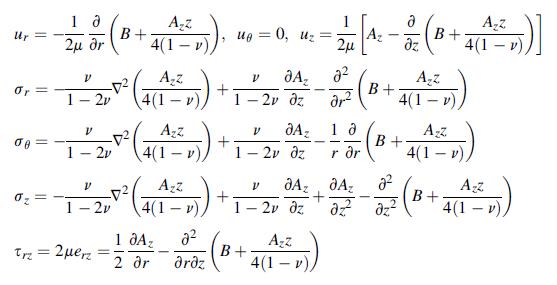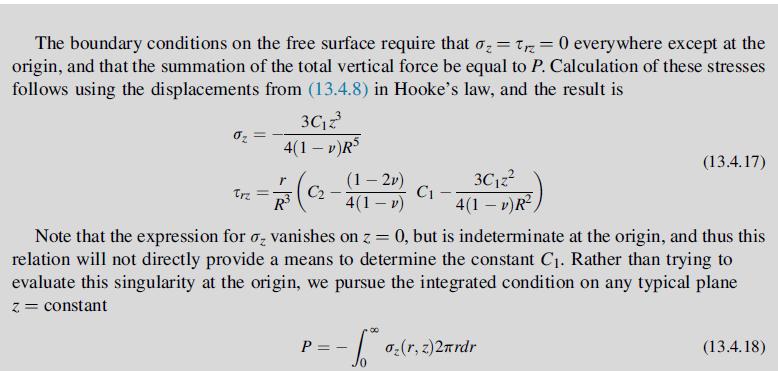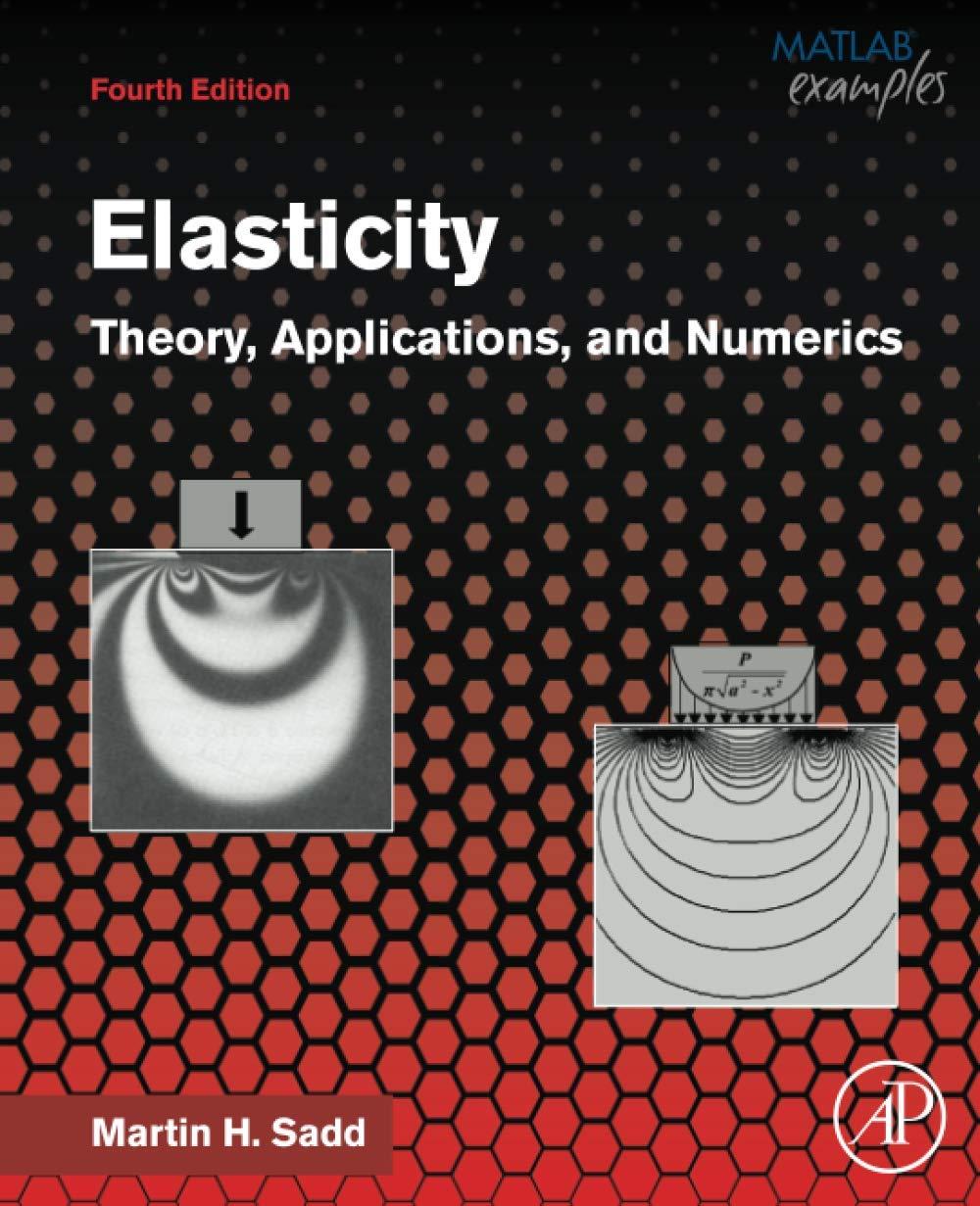Using the results of Exercise 13.14, verify that the displacement and stress fields for the Boussinesq problem
Question:
Using the results of Exercise 13.14, verify that the displacement and stress fields for the Boussinesq problem of Example 13.4 are given by (13.4.20) and (13.4.21). Note the interesting behavior of the radial displacement, that ur > 0 only for points where z/R > (1– 2v)R/(R + z). Show that points satisfying this inequality lie inside a cone ∅ ≤ ∅o, with ∅o determined by the relation cos2∅o + cos∅o –(1–2v) = 0.
Data from exercise 13.4
For the axisymmetric case, the Papkovich functions reduced to the Boussinesq potentials B and Az defined by relations (13.4.11). Show that the general forms for the displacements and stresses in cylindrical coordinates are given by:

Equation 13.4.11

Data from example 13.4



Equation 13.4.20
![Ur= U P 4R P 4R ug = 0 rz (1-2v)r] R R+z 2(1-v) +](https://dsd5zvtm8ll6.cloudfront.net/images/question_images/1705/1/3/5/45365a24d5d7269c1705135453134.jpg)
Equation 13.4.21
![Or e || P 3rz (1-2v)R] R [- + R+z 2TR (1-2v)P 2TR 3Pz 2TR R R R+z [z Trz 3Prz 2RS](https://dsd5zvtm8ll6.cloudfront.net/images/question_images/1705/1/3/5/49065a24d82b42e91705135488896.jpg)
Step by Step Answer:

Elasticity Theory Applications And Numerics
ISBN: 9780128159873
4th Edition
Authors: Martin H. Sadd Ph.D.





